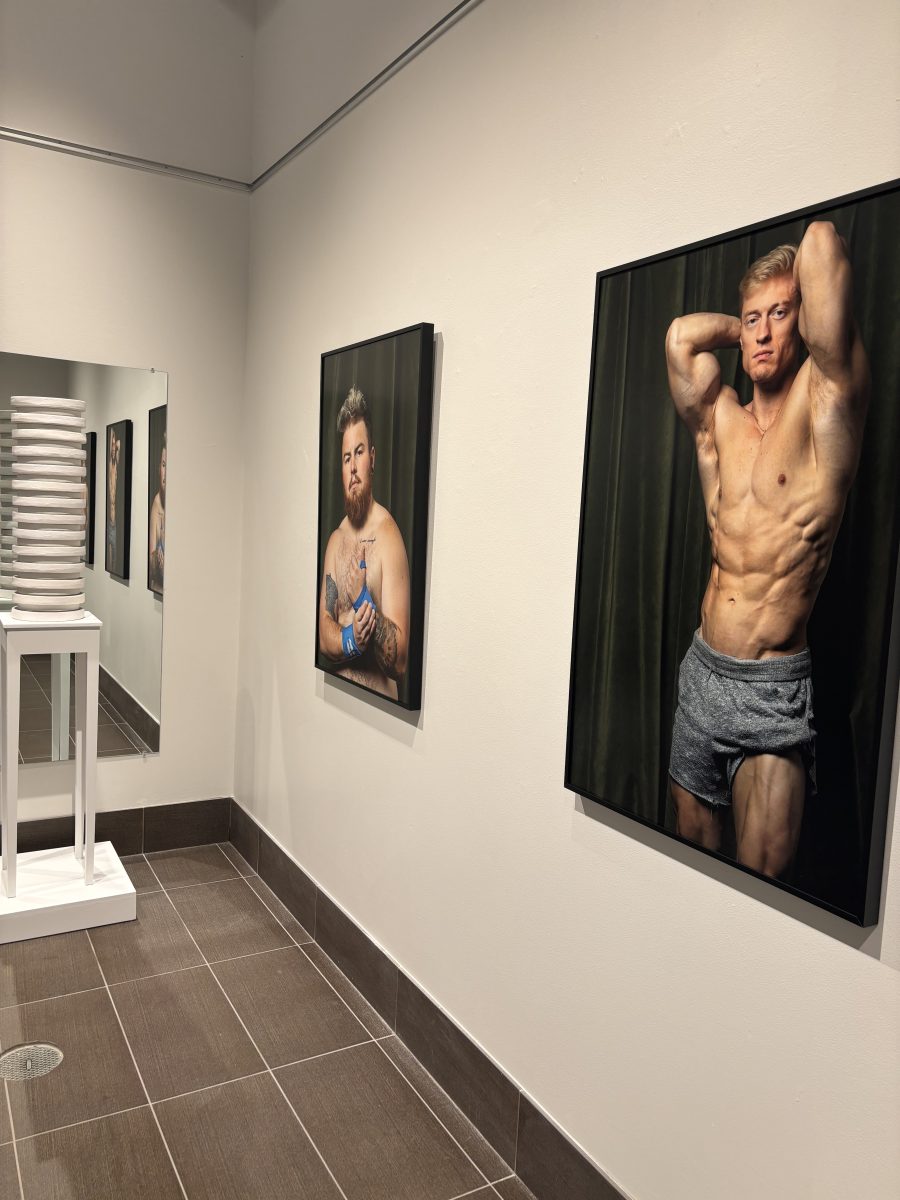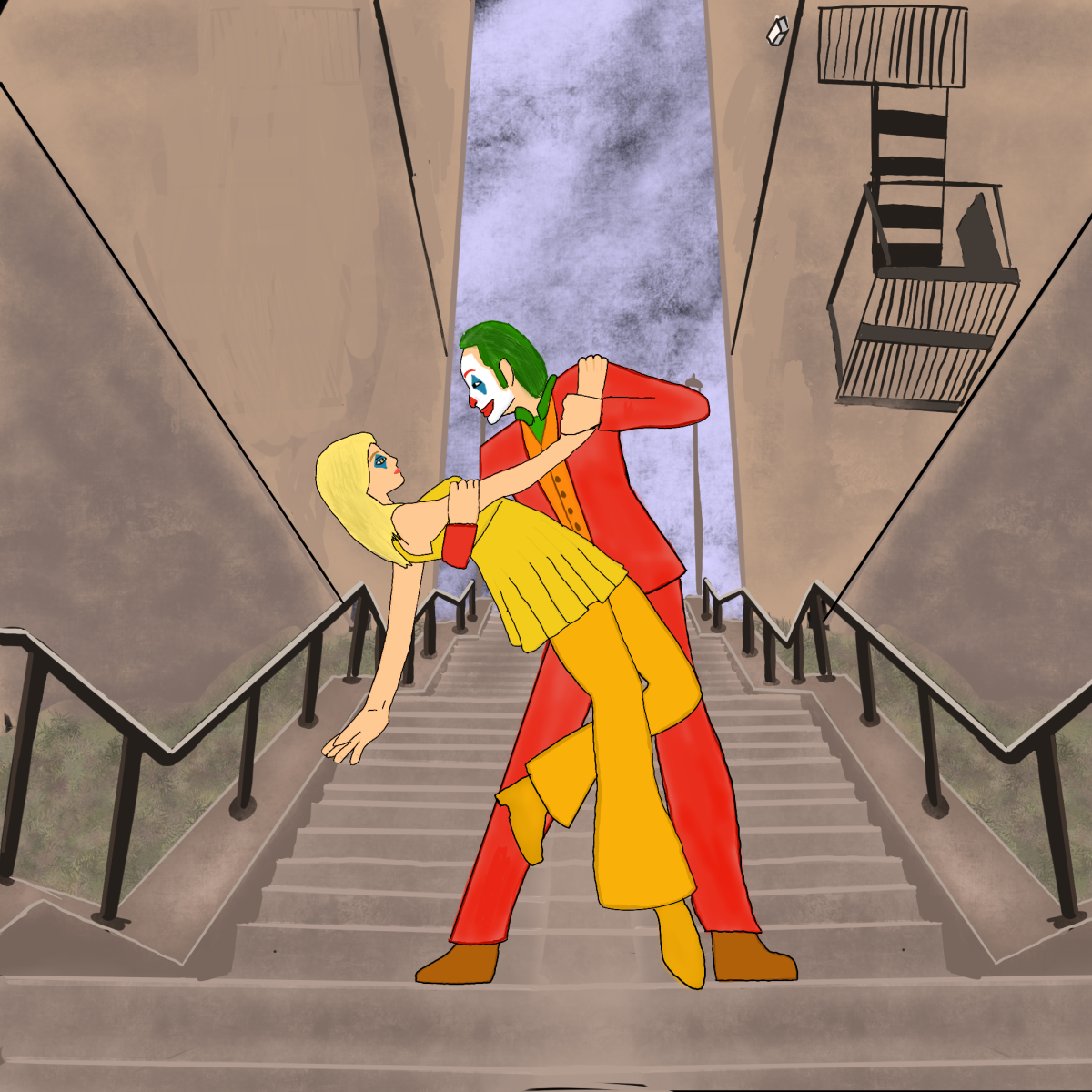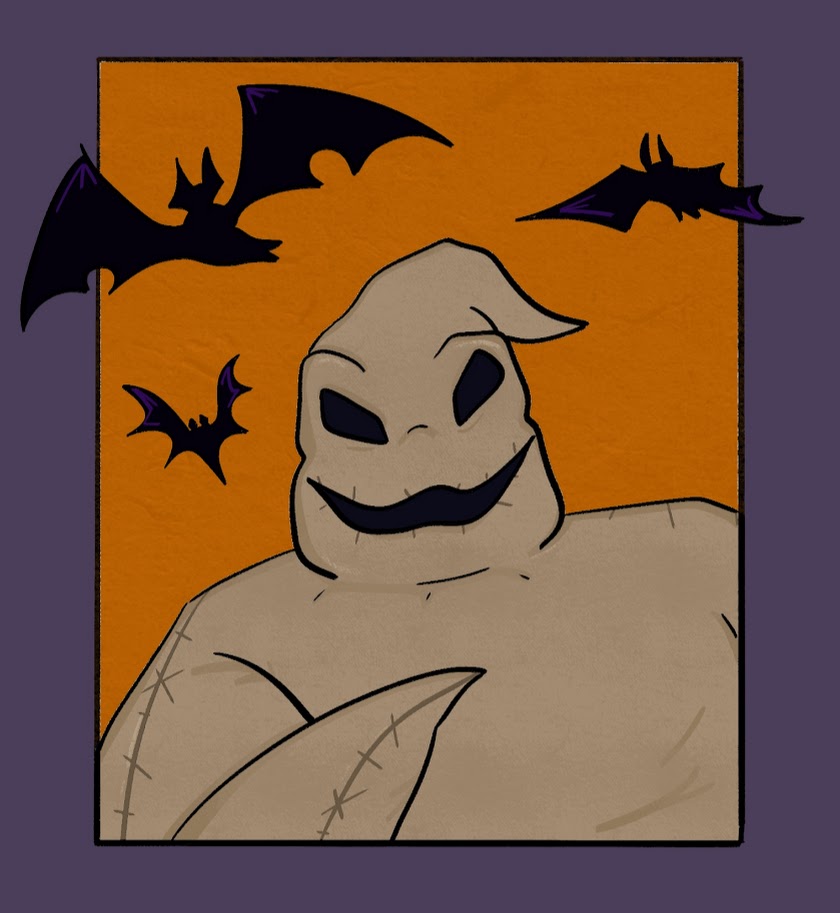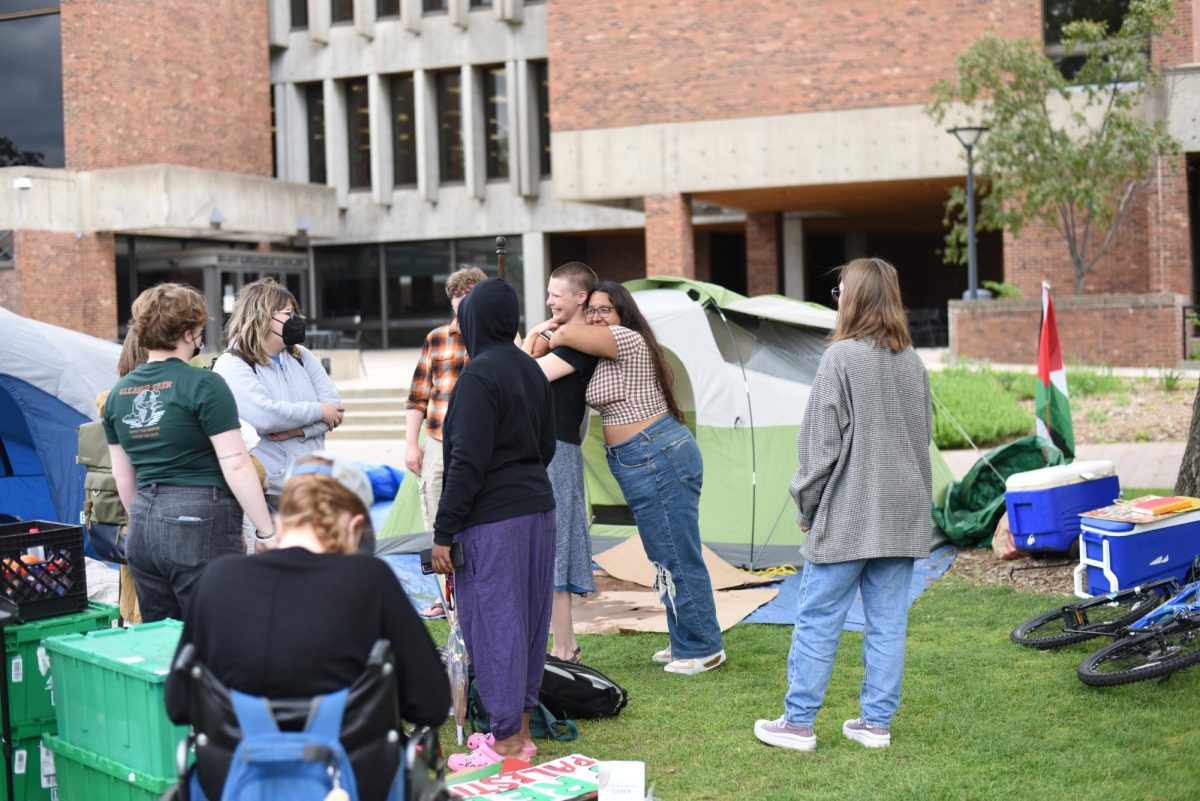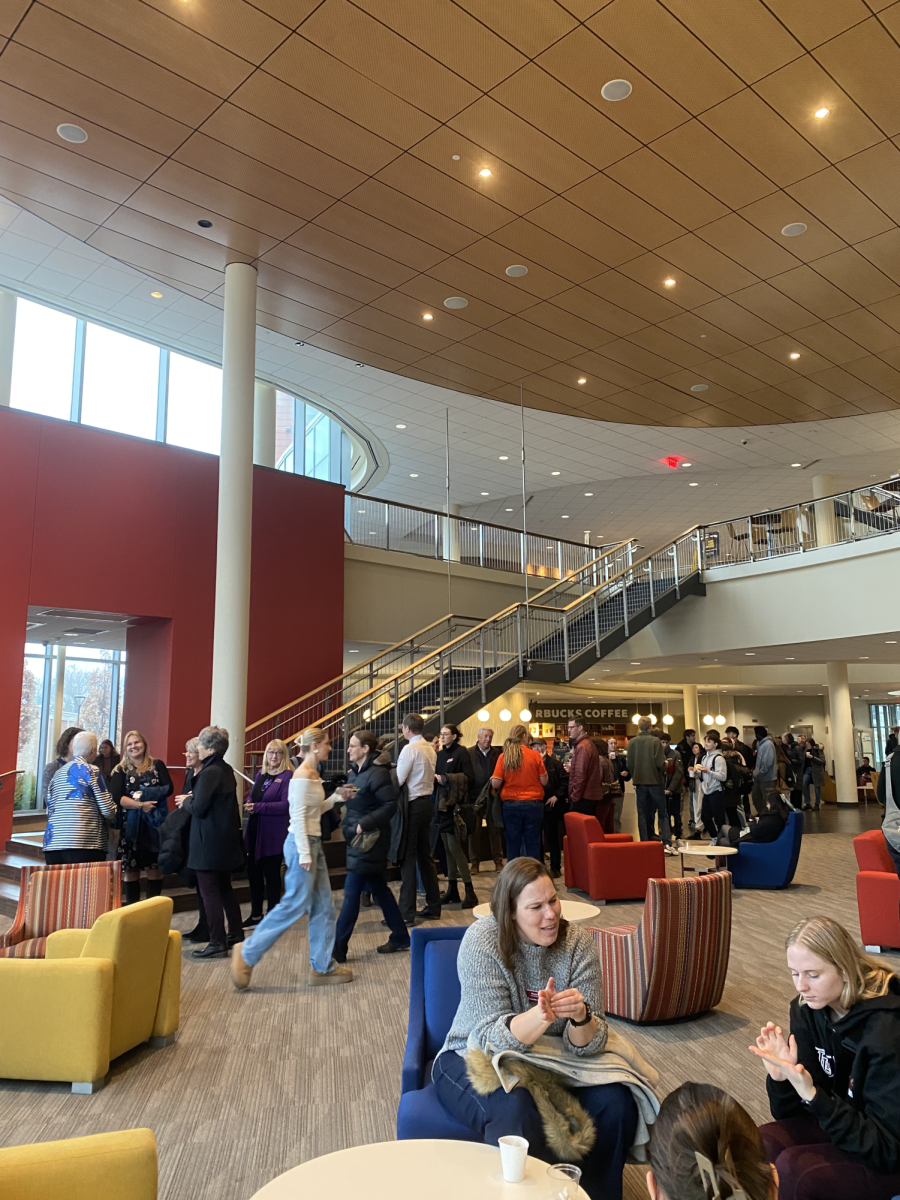Only a twenty-five-minute drive from Hamline is Inver Hills Community College, where a show titled Body//Weight by Minneapolis-based artist Christopher Selleck is being displayed in Gallery 120. The show was previously displayed in the Minneapolis Institute of Art from March to June of this year.
The core of this collection is a seven-year-long exploration of body image and a dive into the idea of a perfect masculine figure. Growing up as a fat, queer kid, Selleck had always had a complex relationship with both his body and food. It is not uncommon for kids to compare themselves to the “ideal body” and perception of masculinity due to society’s pressures and expectations.
Body dysmorphia is becoming more and more common as social media makes an impact on children in their formative years. Outside of the queer community where this is often seen among bodybuilders, a group of people that are commonly represented in Selleck’s works. One of which includes the well-known bodybuilder Joshua Stover, whose portrait has drawn several people in and sparked positive remarks about the man represented.
While this show is on the more serious side, as a journey through modern-day masculinity, the range of people this showhas called in has been astonishing.
Hamline class of ‘23 Alumni Janell Hammer is Inver Hill’s Gallery 120 coordinator and Art Department 2D College Lab Assistant and has worked directly with Selleck throughout this process — including the ups and downs of mirror installation, which included just a few broken mirrors and a hopeful lack of seven years of bad luck.
When Hammer came into her position, the year had already been preplanned. When looking through the list of artists labeled on the calendar, Selleck’s name was one of the few that stood out to her. While Googling his name, she discovered that his works had been featured in a class Hammer took her last semester, as the professor has his own connections to the artist.
“I teach a class here at Hamline titled Visual Constructions of Gender, and I incorporate Christopher’s work in the Construction, Deconstruction, and Reconstruction section of the course,” Hamline Adjunct instructor and friend of Selleck Alonzo Pantoja said in an email. “Specifically his Fighters/Fighting series–I am interested in the way that Christopher’s work challenges the ideas of masculinities within sports.”
In Pantoja’s art history class offered during the spring semester, there is a section where they dive deep into the role gender plays in artwork. One of the featured artists is Selleck, whose works caught the eye of many students. With the dynamic poses and the Rembrandt style black background, the theatrical aspects of Selleck’s work draw the viewer’s eye to the figures that find their home in these images.
“Masculinity is almost like this taboo topic in art, but then also thinking about how that is approached in a nuanced way that’s meant to push against that idea of toxic masculinity, which I think is so valuable about this particular show,” Hammer said.
Despite being a fairly taboo topic, Selleck goes about the creation of this work in a way that attracts a wider audience than traditional masculine portrayals do. The diversity in models chosen for the project, including the previously mentioned bodybuilder and a transgender athlete, Max, makes people with various relationships with their masculinity feel seen.
“And for me, as somebody who is always trying to present masculine in a way, or just sort of feel like ‘oh am I not masculine enough?” Selleck said. “You know, you sort of realize you’ll never be at that point where you’re sort of satisfied — and satisfied might not be the right word — but you know, occupying that type of masculinity is very sort of ephemeral and transitory.”
Selleck also captures his own masculinities through photography, reminiscent of photographer Cindy Sherman, but also through sculptural works.
“Self-portrait appears in my work and there is that self-portrait in the exhibit, and as well as the two sculptures sort of functioning as self-portraits,” Selleck said. “But self-portrait became a very comfortable place for me to occupy because I could photograph myself and I didn’t have to engage with jocks and athletes that I really wanted to photograph but was sort of too scared to, sort of get over that.”
This anxiety is relatable for plenty of queer kids, as the gym space is often seen as a hostile place for people who do not fit into traditionally masculine tropes: an issue that is quite personal for lots of transgender athletes who are struggling to find their place in this community.
Each and every single work captured in the exhibit is astounding and worth each second spent examining the piece. The mirrors placed on the side of the room, used to draw in the audience and have themselves be inserted into the show itself, help keep the audience critically engaged with the work while fostering a space for them to dive deeper into their own masculinity.

